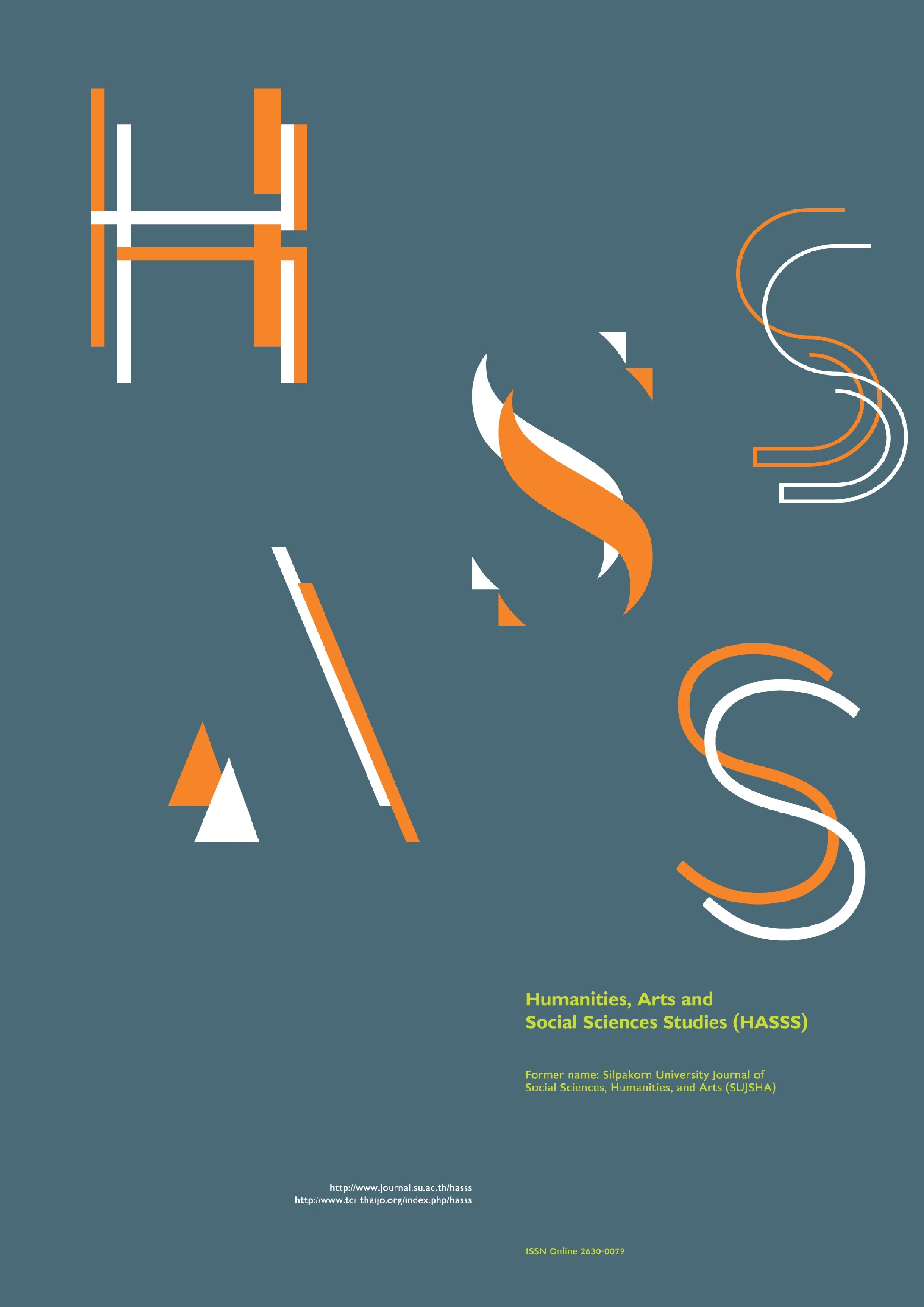The texture effects of handwoven textile appearance of simulated and simplified forms inspired by nature: Experiment on the use of selected local Thai materials
Main Article Content
Abstract
Washing is a process in the life cycle of cloth that regularly produces effects that change the texture of the fabric’s appearance, mostly wrinkled surfaces. Since the durable textures of fabrics are created for utilisation and aesthetics, numerous artists and designers make textures that stimulate our other senses. To create the texture of textiles, the textures appear on the fabrics and the concept and style that those textiles convey. This research aims to conduct experiments on and investigate the texture effects in the materials using the inevitable washing process in the life cycle of cloths, as the key to the relation between inevitable change and the texture effects’ appearance, which were inspired by the constancy of change in nature’s system. This paper experiments on uneven angles of yarn twist and weft direction that were inspired by simulating the shape and structure of a leaf that was itself shaped by the natural evaporating system in dry conditions. The experimental concept examines the effects of its relation to texture and formation using handwoven textiles. The experimental method starts from studying the leaf through the inevitable changes to its textural appearance during its lifetime. The changes of the leaf’s form through its natural evaporation generates stimulating structures and simplified shapes that are mapped to textile weaving formats. Four types of local raw materials using local Thai handweaving were selected to be combined by twisting for the texture effect experiment. The materials consist of two fine silk and cotton combinations, two types of raw Eri silk, and handspun cotton that is bolder than the first group of yarn. The investigation shows that over and less than a ninety-degree weft angle of handwoven textiles in an oblique shape can be automatically performed by curving and rolling, especially with the material combination of handspun cotton yarns. The material characteristics of handspun cotton show remarkable texture effects when twisted with other materials. Furthermore, the shape of a leaf created by textile art is simulated in order to examine the data recorded for the hypothesis that follows the constancy of change in everything. As a result, the textile art shows its natural texture effects appearance.
Downloads
Article Details

This work is licensed under a Creative Commons Attribution-NonCommercial-NoDerivatives 4.0 International License.
All rights reserved. Apart from citations for the purposes of research, private study, or criticism and review,no part of this publication may be reproduced, stored or transmitted in any other form without prior written permission by the publisher.
References
Anderson, S. (2013). The Pinner's Book of Yarn Designs: Techniques for Creating 80 Yarns. North Adams, MA: Storey Publishing LLC.
Arch20. (n.d.) Tree Ring Woodcuts Bryan Nash Gill. [Online URL: https://www.arch2o.com/tree-ring-woodcuts-bryan-nash-gill/] accessed on December 31, 2020.
Bough, G. (2011). The Fashion Designer's Textile Directory: The Creative Use of Fabrics in Design. London: Thames and Hudson Ltd.
Bryan, N. G. (2013). About Bryan — Bryan Nash Gill. [Online URL: https://www.bryannashgill.com/about-bryan] accessed on December 31, 2020.
Dean, H. S. (2010). Practice-led Research, Research-led practice in the Creative Arts. Edinburgh: Edunburgh University Press Ltd.
Fortuny, un Espagnol à Venise [Pamphlet]. (2017). Paris: Musees.
Gentenaar Torley Paper Artists. (n.d.) Peters Portfolio. [Online URL: https://gentenaar-torley.nl/peter/peters-portfolio/#jp-] accessed on December 31, 2020.
Koren, L. (1994). Wabi-Sabi for Artists, Designers, Poets and Philosophers. Berkeley, California: Stone Bridge Press.
Kristin Farr, J. W. (2016). Analyzing the Elements of Art | Seven Ways to Think About Texture. [Online URL: https://www.nytimes.com/2016/10/13/learning/lesson-plans/analyzing-the-elements-of-art-seven-ways-to-think-about-texture.html] accessed on December 31, 2020.
Miyake, I. (2012). Issey Miyake: Pleats Please. Cologne: Taschen.
Richards, A. (2012). Weaving Textiles that Shape Themselves. Wiltshire: The Crowood Press Ltd.
Shenton, J. (2014). Woven Textile Design. London: Laurence King Publisher.
TIFA Working Studio. (2020). TaleraInstitute Photos. [Online URL: https://www.facebook.com/TaleraInstitute/photos/1849319608577126] accessed on December 31, 2020.


